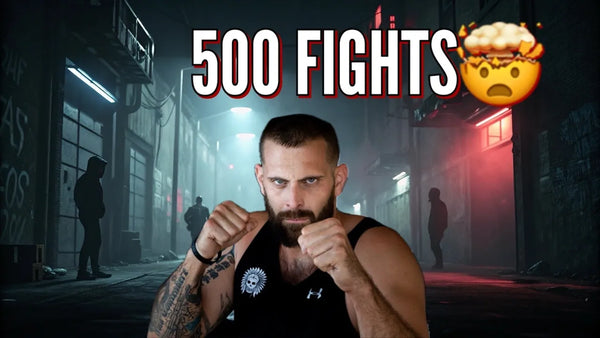What 500 Fights Taught Me About Self-Defense
Most people think self-defense is about training in a gym, throwing punches, learning fancy moves. But I've been in over 500 real fights—street fights, bars, political riots, and dangerous encounters you won't see in movies—and what I learned will completely change the way you think about protecting yourself.
I'm not here to show you flashy moves. I'm here to teach you the truth about survival when violence isn't optional.
My name is Greg Tambone. I was a bouncer for years, a kickboxer, an international fugitive, and, at one point, considered a political prisoner. I've had to survive in non-permissive environments where one wrong move meant serious injury or worse. I've tested every theory, every technique, and I've learned that most self-defense advice out there is just bunk.
I'm going to break down the five most important lessons I learned from 500 street fights. These aren't theory. They aren't sports techniques. They're survival truths. And if you pay attention, it could literally save your life someday.
Lesson number one: control the environment before the fight controls you. Most people think fights are just about fists. Wrong. The fight is already happening before a punch is thrown. Look around. Are there objects you can use? Obstacles you can put between you and the attacker—doors, walls, cars—anything to tilt the odds in your favor. I've thrown people into hard objects they didn't even realize were there simply by reading the space around me. It's not flashy, but it works.
Lesson number two: don't be predictable. People think being a fighter means being aggressive all the time. In reality, predictability kills. I've watched trained martial artists get stomped in seconds because they followed textbook moves. In one fight where a man tried to rush me, I didn't move forward. I moved sideways, using the momentum he gave me against him. That split second of unpredictability won the fight. Real fights don't follow rules.
Lesson three: your environment, what you know, and, lastly, what you have on you are your arsenal. When I was on the run, I couldn't always carry weapons. I learned to turn everyday items into life-saving tools. I learned the difference a force multiplier could make, which is what led to my innovative product designs. But even a pen, a fire extinguisher, even a crumbled piece of brick. These things aren't just tools—they're weapons if you know how to use them. People laugh at this online, but after a fight has ended quickly and efficiently by thinking outside the box, they stop laughing real fast.
Lesson four: don't fight unless you have to. Here's the brutal truth: the people who survive are the ones who avoid ego fights. I've seen guys dominate in the gym but get knocked out walking out of a bar. Self-defense isn't about proving anything. It's about living to see another day. Sometimes walking away isn't weakness; it's the smartest move you'll ever make.
And finally, lesson five: mindset beats strength every time. Fear, panic, and hesitation will get you hurt faster than any punch. I fought opponents twice my size. I controlled my fear. I trained my mind. I visualized survival. I was prepared long before the fight took place, through years of training—not just my body but my mind. Strength is temporary, but your mindset can carry you through much more dangerous situations.
These five lessons saved my life more times than I can count, and now I want to pass them on. If you want real, no-bull self-defense strategies from someone who's lived it, hit subscribe and turn on notifications. I'm also putting together a full guide with every lesson from 500 street fights, including step-by-step breakdowns, survival tips, and hidden techniques I can't share on YouTube. Comment below if you have an idea of where I can share that info.
Bone out.
Greg Tambone



